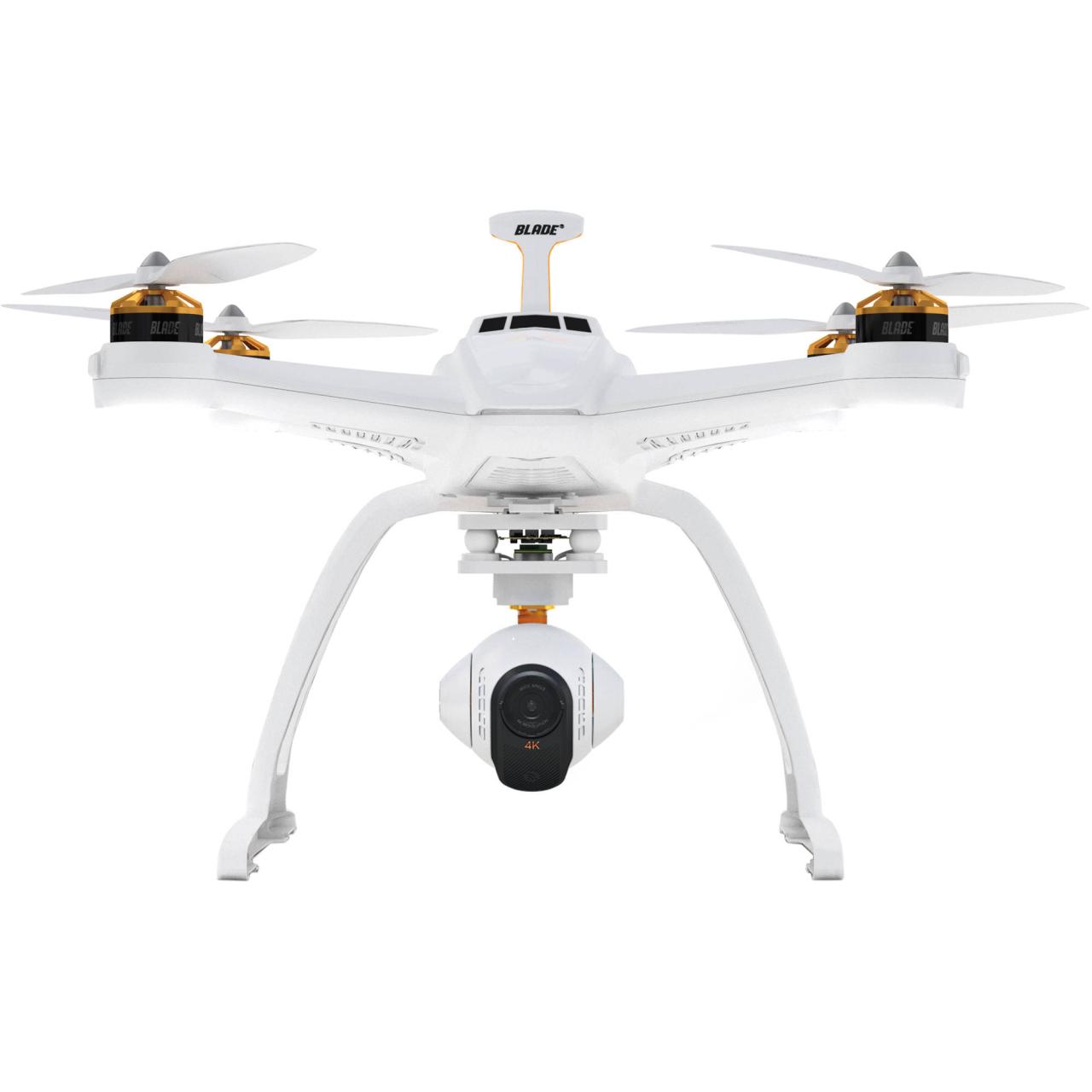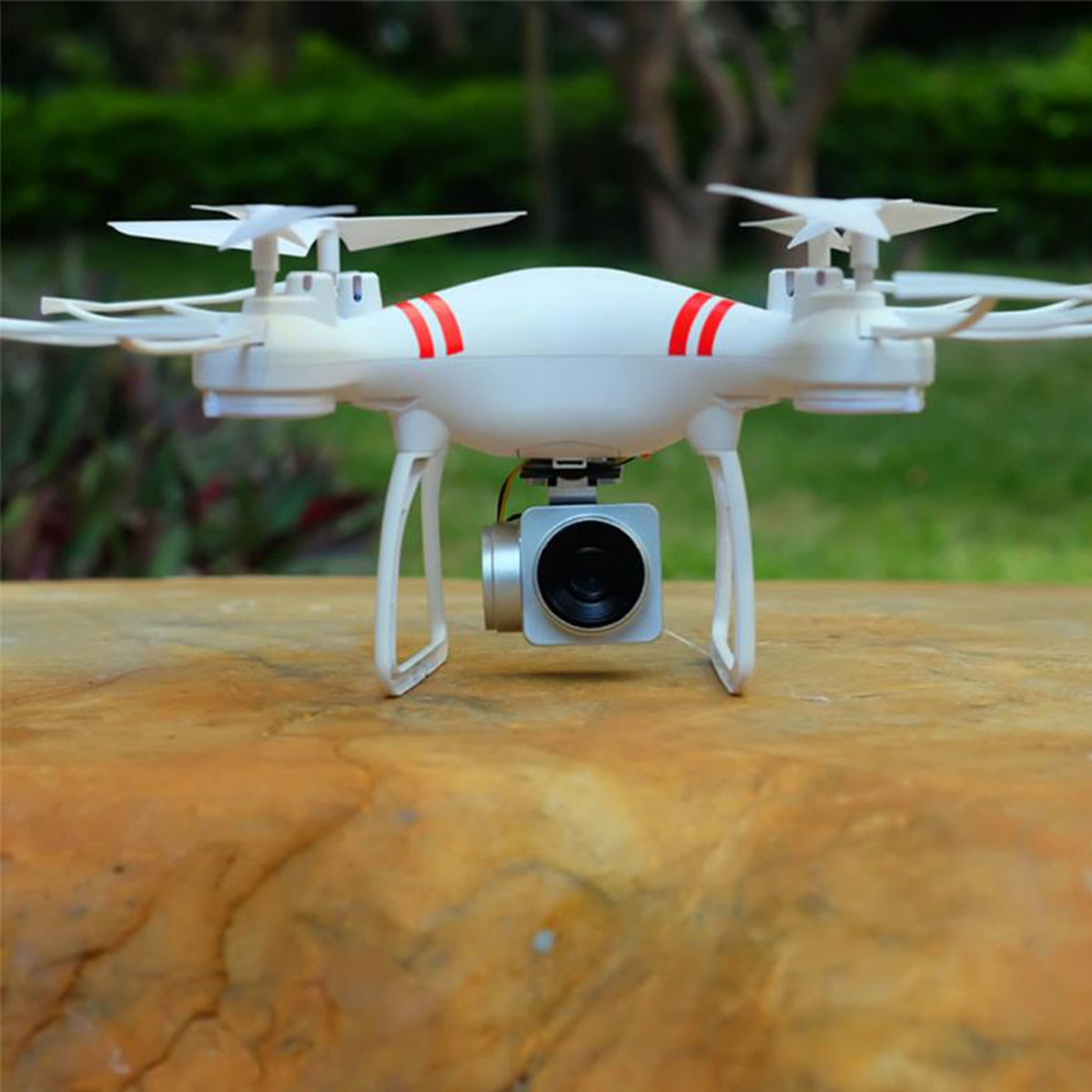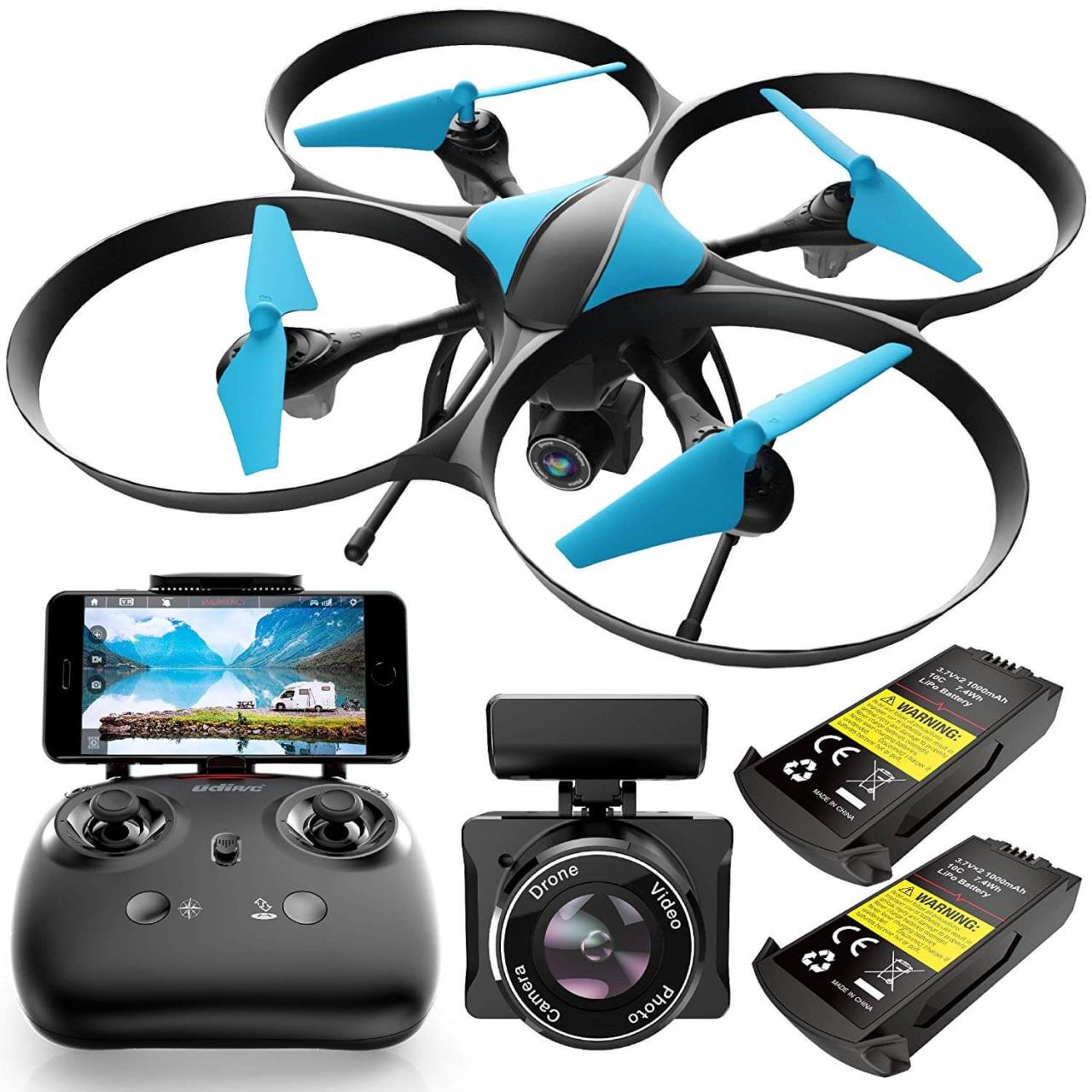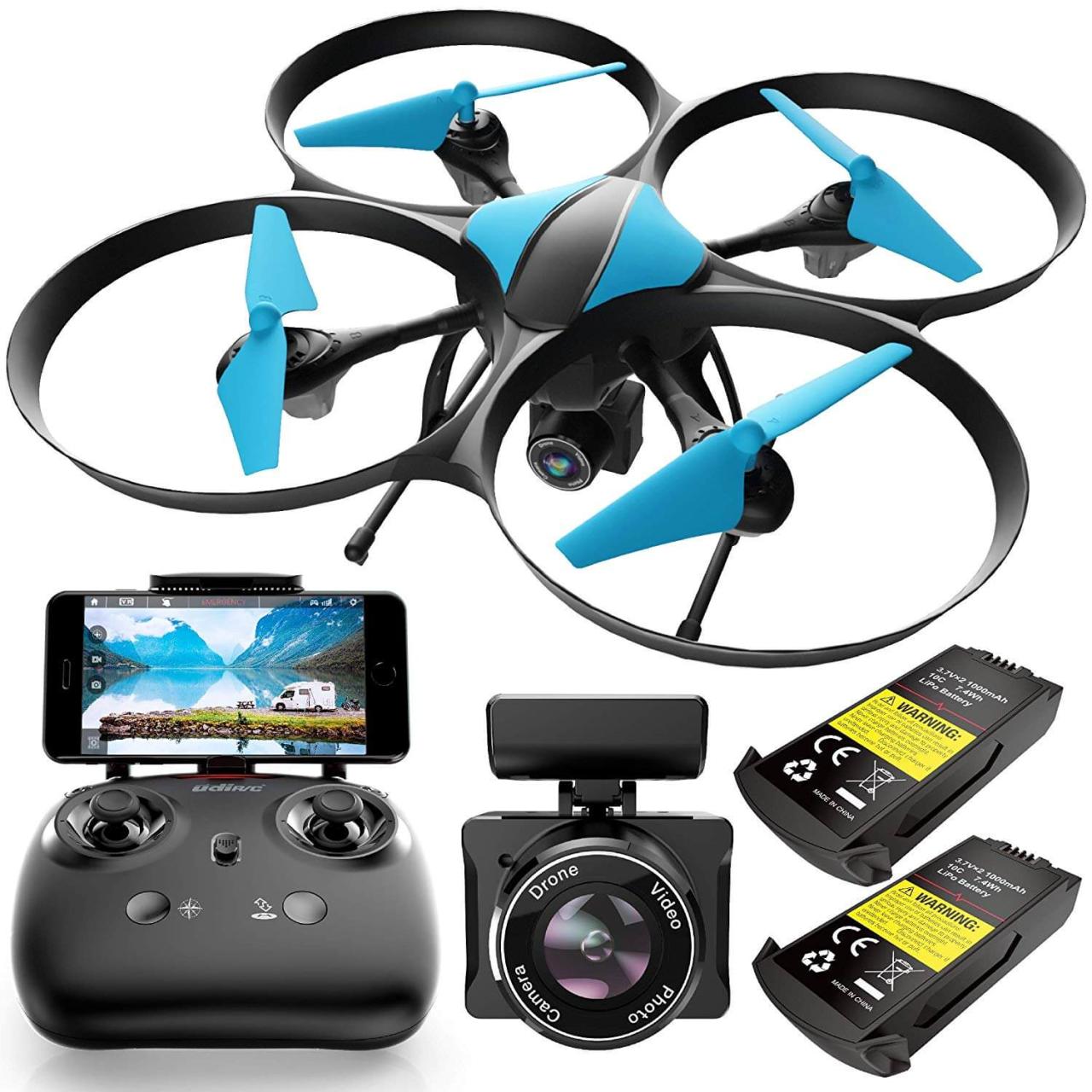Drone with camera technology has revolutionized numerous sectors, from aerial photography and filmmaking to infrastructure inspection and search and rescue operations. This guide delves into the multifaceted world of drones equipped with cameras, exploring their diverse applications, technological advancements, and the crucial legal and ethical considerations surrounding their use. We’ll examine various drone models, camera technologies, flight capabilities, and post-processing techniques, providing a comprehensive understanding of this rapidly evolving field.
From understanding the different types of camera sensors and image stabilization methods to mastering flight operations and navigating legal regulations, this guide equips readers with the knowledge needed to effectively utilize drone camera technology. We’ll also explore future trends, such as AI-powered image analysis and advanced sensor technologies, painting a picture of the exciting possibilities that lie ahead.
Types of Drones with Cameras
Drones with cameras offer a diverse range of capabilities, catering to various needs and budgets. The classification of these drones is primarily based on camera specifications, intended use, and overall features. This section details the different types and provides examples.
Drone Classification by Camera Capabilities
Drones are categorized by camera resolution (measured in megapixels), zoom capabilities (optical vs. digital), and image stabilization technology (mechanical gimbals, electronic image stabilization). High-resolution cameras are ideal for capturing detailed images, while zoom capabilities allow for capturing distant subjects. Effective image stabilization is crucial for smooth, sharp footage, especially during flight.
Drone Examples by Intended Use
- Aerial Photography: Drones like the DJI Mavic 3 Pro, known for its high-resolution cameras and advanced image processing, are popular choices. These drones often feature Hasselblad cameras for exceptional image quality.
- Videography: The DJI Inspire 2, with its ability to carry professional cinema cameras, is favored for high-quality video production. Its powerful motors and advanced flight control systems allow for stable and dynamic shots.
- Surveillance: Smaller, more compact drones with long battery life and discreet designs are preferred for surveillance applications. Features like thermal imaging cameras enhance their capabilities in low-light conditions.
- Inspection: Drones equipped with high-resolution zoom lenses and potentially thermal cameras are vital for infrastructure inspection. Their ability to access hard-to-reach areas makes them invaluable for tasks like bridge or power line inspections.
Comparison of Drone Models
| Brand | Model | Camera Specs | Price Range |
|---|---|---|---|
| DJI | Mavic 3 Pro | 4/20MP Hasselblad camera, 7x optical zoom | $1500 – $2000 |
| DJI | Mini 3 Pro | 48MP camera, 3x optical zoom | $800 – $1200 |
| Autel Robotics | Evo II Pro | 48MP camera, 8K video recording | $1200 – $1800 |
| Parrot | Anafi USA | 21MP camera, 4K video recording | $600 – $900 |
Camera Technology in Drones
Drone cameras utilize advanced technologies to capture high-quality images and videos. Understanding the underlying technology is crucial for appreciating the capabilities and limitations of different drone models.
Camera Sensor Types
CMOS (Complementary Metal-Oxide-Semiconductor) and CCD (Charge-Coupled Device) are the two primary types of image sensors used in drone cameras. CMOS sensors are generally more energy-efficient and offer faster readout speeds, making them more suitable for drones. CCD sensors, while potentially offering higher image quality in some scenarios, are less energy efficient.
Drones equipped with cameras offer incredible versatility, from aerial photography to surveying. The advancements in this technology are impressive, and companies like archer aviation , known for their innovative aircraft designs, are pushing the boundaries of what’s possible. This ultimately impacts the capabilities and potential applications of drone-based camera systems, leading to even more sophisticated and effective aerial imaging solutions.
Image Stabilization Techniques
Mechanical gimbals, which physically isolate the camera from drone movements, offer superior stabilization. Electronic image stabilization (EIS) uses software algorithms to compensate for camera shake, but it is less effective than mechanical stabilization, particularly in turbulent conditions. Hybrid systems combine both for optimal results.
Impact of Lens Focal Length and Aperture
Focal length determines the field of view; a longer focal length results in a narrower field of view (telephoto effect), while a shorter focal length provides a wider field of view (wide-angle effect). Aperture controls the amount of light entering the camera, affecting depth of field and exposure. A wider aperture (smaller f-number) results in a shallower depth of field, ideal for isolating subjects, while a narrower aperture (larger f-number) results in a greater depth of field, suitable for landscape photography.
Drone Flight Capabilities and Camera Operation
Safe and effective operation of a drone with a camera requires careful planning and adherence to safety protocols. Understanding flight modes and environmental factors is crucial for obtaining high-quality footage.
Step-by-Step Drone Operation Procedure
- Pre-flight checks: Battery level, GPS signal, camera settings, and surrounding environment assessment.
- Calibration: Ensuring the drone’s sensors are properly calibrated.
- Flight mode selection: Choosing the appropriate flight mode based on the desired level of control and camera operation.
- Camera settings: Adjusting settings such as ISO, shutter speed, and aperture.
- Flight execution: Careful maneuvering of the drone to capture the desired footage.
- Post-flight checks: Inspecting the drone for damage and storing the footage securely.
Flight Modes and Camera Control, Drone with camera
GPS mode offers autonomous flight and precise positioning, simplifying camera operation. Manual mode allows for more creative control but requires greater skill. Autonomous modes offer pre-programmed flight paths and camera movements, ideal for automated aerial photography or videography.
Impact of Wind Speed and Altitude
High wind speeds can significantly affect flight stability and image quality, causing blurry footage. Altitude affects the perspective and field of view; higher altitudes offer wider shots, while lower altitudes provide more detailed views.
Applications of Drones with Cameras: Drone With Camera
Drones with cameras are transforming various industries by providing efficient and cost-effective solutions for data acquisition and monitoring.
Drone Applications Across Industries
- Agriculture: Precision farming using drones for crop monitoring, irrigation management, and yield estimation.
- Infrastructure Inspection: Inspecting bridges, power lines, and other infrastructure for damage and wear and tear using high-resolution cameras and thermal imaging.
- Search and Rescue: Locating missing persons or survivors in disaster areas using thermal and visual cameras.
- Filmmaking: Capturing stunning aerial shots for movies and television productions.
Camera Features in Specific Applications
High-resolution cameras are crucial for detailed mapping and inspection, while thermal imaging allows for the detection of heat signatures, beneficial in building inspections and search and rescue operations. Advanced zoom lenses are useful for inspecting hard-to-reach areas.
Legal and Ethical Considerations
The use of drones with cameras raises important legal and ethical concerns related to privacy, safety, and data security.
Drone Regulations
Regulations vary by region; it’s crucial to understand and comply with local laws regarding drone operation, including registration, airspace restrictions, and data privacy. Many jurisdictions require pilot licensing and adherence to specific operational guidelines.
Ethical Implications
The use of drones for surveillance raises ethical concerns regarding privacy violations. Responsible use emphasizes transparency, informed consent, and adherence to ethical guidelines.
Guidelines for Responsible Drone Operation
Prioritize safety, respect privacy, and comply with all applicable laws and regulations. Avoid intrusive surveillance and obtain necessary permissions before filming people or private property.
Image and Video Processing

Post-processing plays a crucial role in enhancing the quality and usability of drone images and videos.
Post-Processing Techniques
Color correction, noise reduction, and image sharpening are common techniques used to improve the overall appearance of drone footage. Stitching software is used to create seamless panoramic images from multiple overlapping shots.
Software for Drone Footage Editing
Adobe Premiere Pro, DaVinci Resolve, and DJI Fly are examples of software specifically designed for editing drone footage. These applications provide tools for color grading, stabilization, and special effects.
Common Image and Video Formats
JPEG, TIFF, and RAW are common image formats. MP4 and MOV are commonly used video formats, offering varying levels of compression and quality.
Drone Accessories and Upgrades

Various accessories can significantly enhance the capabilities and performance of a drone with a camera.
Drone Accessories

ND filters reduce light entering the camera, useful in bright conditions. Gimbals provide enhanced stabilization, resulting in smoother footage. Extra batteries extend flight time.
Drone Camera Mounts
Different mounts offer varying degrees of stability and adjustability. Choosing the right mount is crucial for optimal image quality.
Drone Maintenance
Regular cleaning, sensor checks, and firmware updates are essential for maintaining optimal camera performance and prolonging the drone’s lifespan.
Future Trends in Drone Camera Technology
Drone camera technology is constantly evolving, with exciting advancements on the horizon.
Emerging Trends
AI-powered image analysis will automate tasks like object recognition and image classification. Advanced stabilization systems will further improve image quality, even in challenging conditions.
New Sensor Technologies
LiDAR (Light Detection and Ranging) offers precise 3D mapping capabilities. Hyperspectral imaging allows for the capture of detailed spectral information, useful in agriculture and environmental monitoring.
Drones equipped with cameras offer a versatile platform for various applications, from aerial photography to surveillance. The capabilities of these devices are constantly evolving, as seen with the development of sophisticated models like the shahed drone , which highlights advancements in both camera technology and flight control systems. Ultimately, the integration of advanced technology continues to improve the overall performance and usability of drones with cameras.
Future Vision
In the next 5-10 years, expect smaller, lighter, and more powerful drones with even more advanced camera systems, enabling wider applications across various industries.
The integration of cameras into drone technology has undeniably reshaped numerous industries and opened up unprecedented opportunities for innovation. As we’ve explored, understanding the intricacies of drone camera systems—from camera specifications and flight capabilities to legal regulations and ethical considerations—is crucial for responsible and effective utilization. The future of drone camera technology promises even greater advancements, further expanding the possibilities of this transformative technology across various sectors.
FAQs
What is the flight time of a typical drone with a camera?
Flight time varies greatly depending on the drone model, battery size, and weather conditions. Expect anywhere from 15 to 45 minutes on a single charge.
How do I store my drone and camera safely?
Store your drone in a cool, dry place away from direct sunlight. Keep it in a protective case to prevent damage. Similarly, store batteries separately and ensure they are charged to around 50% for long-term storage.
What is the best software for editing drone footage?
Popular choices include Adobe Premiere Pro, DaVinci Resolve, and Final Cut Pro. Many free options exist, such as HitFilm Express and Kdenlive.
How much does drone insurance cost?
Drone insurance costs vary significantly based on the drone’s value, your flight location, and the type of coverage you need. It’s advisable to obtain quotes from multiple providers.
